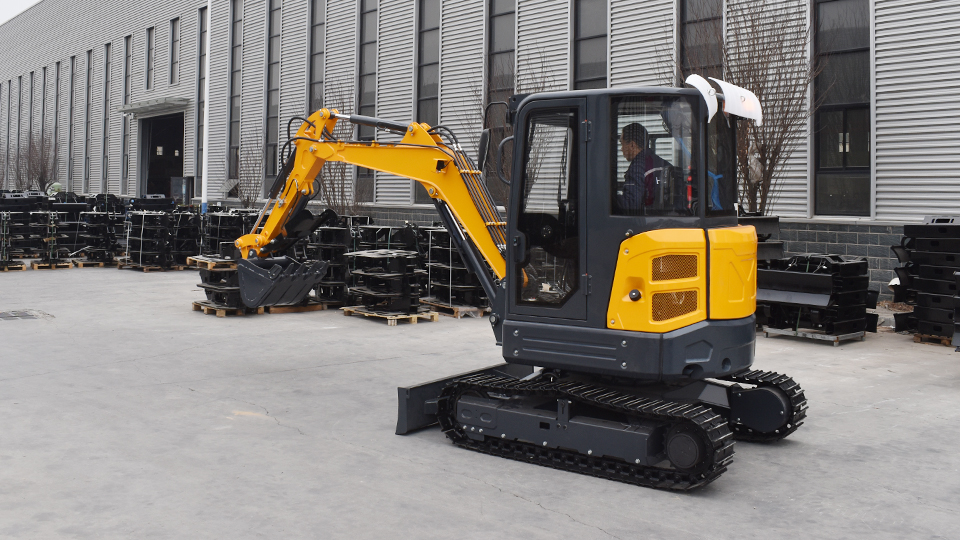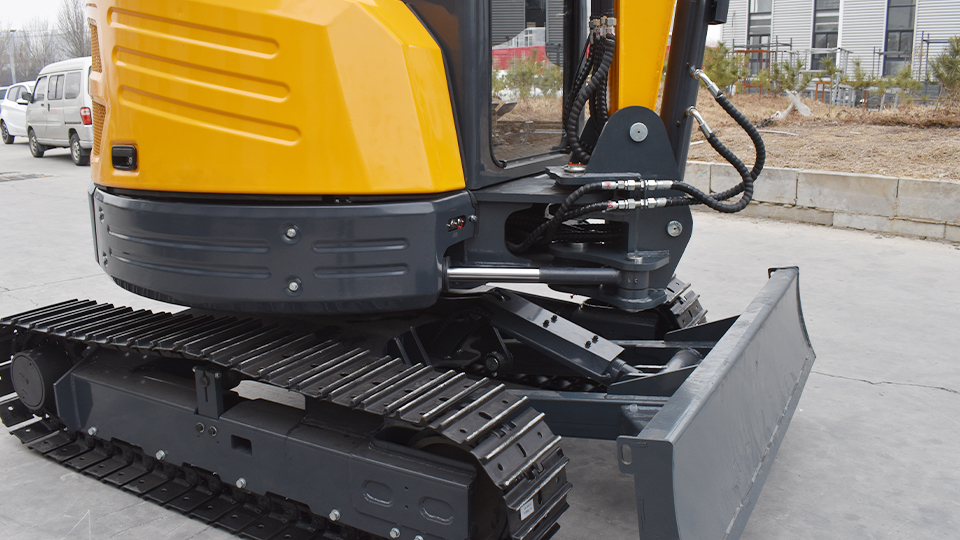Mastering the Earth's Embrace: A Comprehensive Guide to the Art of Excavation
Excavation, at its core, is the science and art of moving earth. From the initial groundbreaking of a skyscraper to the delicate uncovering of archaeological artifacts, it is a fundamental process that shapes our physical world. While the brute force of machinery might seem to dominate, true mastery of excavation lies in a nuanced understanding of soil mechanics, equipment operation, safety protocols, and the meticulous planning that underpins every successful dig. This technical article delves into the multifaceted art of excavation, exploring the key principles, techniques, and considerations that separate a proficient operator from a true master of the earth.
The Foundation: Understanding the Earth Itself
Before a single bucket of soil is moved, a master excavator understands the very material they are about to manipulate. Soil is not a uniform substance; it is a complex mixture of minerals, organic matter, water, and air, each component influencing its behavior and how it responds to excavation.
Soil Mechanics: A foundational understanding of soil mechanics is paramount. This includes recognizing different soil types (clay, sand, silt, gravel, loam), their properties (cohesion, friction angle, density, permeability), and how these properties affect stability, bearing capacity, and the potential for slope failure. A master can visually assess soil conditions and anticipate its behavior under excavation.
Soil Testing and Analysis: For larger or more complex projects, relying solely on visual assessment is insufficient. Mastering excavation often involves interpreting geotechnical reports based on soil testing (e.g., sieve analysis, Atterberg limits, Proctor compaction test). These reports provide crucial data for selecting appropriate excavation methods, designing stable slopes, and predicting settlement.
Groundwater Management: The presence and movement of groundwater significantly impact excavation. A master excavator understands how to identify groundwater levels, predict seepage, and implement appropriate dewatering techniques (e.g., well points, sumps, interceptor drains) to ensure a stable and workable excavation.
The Tools of the Trade: Precision and Power
The excavator itself is an extension of the operator's skill. Mastering its operation involves more than just moving levers; it requires a deep understanding of its capabilities, limitations, and the subtle nuances of its control systems.
Machine Familiarity: A master operator has an intimate understanding of the specific excavator they are using – its weight, reach, lifting capacity, hydraulic pressures, and the responsiveness of its controls. This familiarity translates into smooth, efficient, and precise movements.

Control Mastery: Modern excavators utilize sophisticated hydraulic systems and electronic controls. Mastering these systems involves developing fine motor skills and a sense of intuitive control over the boom, arm, bucket, and swing functions. This allows for delicate work, such as trenching around utilities, as well as efficient bulk excavation.
Attachment Proficiency: Excavators are versatile machines capable of utilizing a wide array of attachments (e.g., buckets of various sizes and types, breakers, grapples, shears). A master excavator understands the capabilities and limitations of each attachment and can select and operate them effectively for specific tasks. This includes understanding the optimal angles and pressures for different materials and applications.
Maintenance Awareness: A master operator understands the importance of daily checks and basic maintenance. Recognizing potential issues early can prevent costly breakdowns and ensure the machine operates at peak performance. This includes monitoring fluid levels, inspecting hoses and connections, and lubricating critical components.
The Art of the Dig: Technique and Efficiency
The way an excavator is used directly impacts the efficiency, safety, and quality of the excavation. Mastering the art of the dig involves employing techniques that optimize material removal, minimize re-handling, and maintain a stable and safe working environment.
Planning the Excavation Sequence: Before commencing work, a master excavator mentally (or physically, with markings) plans the sequence of cuts and movements to optimize material flow and minimize travel distances. This includes considering the final shape of the excavation, the location of spoil piles, and potential obstacles.
Efficient Digging Cycles: Mastering the digging cycle – from bucket entry to material dumping – involves smooth, coordinated movements that minimize cycle time and fuel consumption. This includes understanding the optimal bucket angle for penetration, filling the bucket efficiently, and swinging and dumping with precision.
Layered Excavation: For deeper excavations, a master employs layered excavation techniques, removing material in controlled lifts to maintain slope stability and prevent undercutting. The thickness of each layer is determined by soil conditions and the capabilities of the machine.
Trenching Expertise: Trenching requires precision and control, especially when working around existing utilities. A master excavator can maintain consistent trench width and depth, minimize over-excavation, and ensure the stability of trench walls (often in conjunction with shoring or sloping).
Grading and Shaping: Beyond simply removing material, mastering excavation often involves the ability to grade and shape the excavated area to specific requirements. This requires a keen eye for level and slope, as well as the ability to use the bucket to achieve smooth and accurate surfaces.
Material Management: Efficient excavation includes effective material management. A master plans for the placement of excavated material, minimizing re-handling and ensuring stable spoil piles that do not pose a safety hazard. Understanding material characteristics also informs how it can be best used for backfilling or other purposes.
Safety: The Uncompromising Principle
Safety is not just a set of rules; it is an ingrained mindset for a master excavator. Operating heavy machinery in dynamic environments inherently involves risks, and a true professional prioritizes safety above all else.
Pre-Operation Checks: A thorough pre-operation check of the excavator is non-negotiable. This includes inspecting controls, safety devices, fluid levels, and the overall condition of the machine.
Site Assessment: Before starting work, a master assesses the site for potential hazards, including overhead power lines, underground utilities, unstable slopes, and the presence of personnel.
Communication and Signaling: Clear communication with ground personnel is crucial. Understanding and adhering to standard hand signals and radio protocols is essential for safe operation.
Maintaining Safe Operating Distances: A master operator maintains safe distances from other equipment, personnel, and structures at all times. They understand the swing radius of the excavator and the potential hazards associated with blind spots.

Slope Stability Awareness: Continuously monitoring slope conditions and understanding the signs of potential instability (e.g., cracking, bulging) is critical for preventing collapses. Implementing appropriate slope protection measures (e.g., benching, shoring, sloping) is a hallmark of a master excavator.
Emergency Procedures: A master operator is familiar with emergency shutdown procedures and knows how to respond in the event of an accident or equipment malfunction.
Planning and Preparation: The Blueprint for Success
Mastering excavation begins long before the engine starts. Thorough planning and preparation are essential for ensuring efficiency, safety, and achieving the desired outcome.
Reviewing Project Plans and Specifications: A master excavator meticulously reviews project plans, blueprints, and specifications to understand the scope of work, required depths, grades, and any specific instructions.
Site Reconnaissance: Conducting a thorough site reconnaissance to identify existing conditions, potential obstacles, and access points is crucial for effective planning.
Utility Locating: Before any digging commences, ensuring all underground utilities (gas lines, electrical cables, water and sewer pipes) are accurately located and marked is paramount to prevent damage and ensure safety.
Traffic Management: In projects near roadways or pedestrian areas, a master excavator understands the importance of implementing appropriate traffic management plans to ensure the safety of both workers and the public.
Environmental Considerations: Modern excavation practices must also consider environmental regulations. A master excavator is aware of erosion control measures, dust suppression techniques, and proper disposal of excavated materials.
Continuous Learning and Adaptation: The Mark of a True Master
The art of excavation is constantly evolving with advancements in technology, new techniques, and changing regulations. A true master is a lifelong learner, continuously seeking to improve their skills and knowledge.
Staying Updated with Technology: Familiarizing oneself with new excavator technologies, such as GPS guidance systems, machine control systems, and telematics, can significantly enhance efficiency and precision.
Learning New Techniques: The field of excavation is dynamic, with new techniques and best practices constantly emerging. A master remains open to learning and adopting innovative approaches.
Problem-Solving Skills: Excavation often presents unexpected challenges. A master excavator possesses strong problem-solving skills and can adapt their techniques and approach to overcome unforeseen obstacles.
Mentorship and Knowledge Sharing: True mastery often involves the willingness to mentor less experienced operators and share knowledge, contributing to the overall advancement of the craft.
Conclusion: The Symphony of Earth and Machine
Mastering the art of excavation transcends the mere operation of heavy machinery. It encompasses a deep understanding of the earth's composition and behavior, an intuitive command of the excavator and its attachments, a commitment to efficient and safe operating techniques, meticulous planning and preparation, and a dedication to continuous learning. A true master excavator orchestrates a symphony of earth and machine, shaping the landscape with precision, skill, and an unwavering respect for the power and potential of the ground beneath our feet. It is a craft honed through years of experience, a blend of technical expertise and intuitive understanding, ultimately leaving a lasting imprint on the world we build.
Post time:Sep-25-2020
